This 'Clean a Sport Anchor' article is part of the book - Sport Climbing Basics.

Cleaning a sport anchor means removing all of your gear from it. Three of the main ways to do this are described below.
Which you choose depends on the type of anchor and whether you plan to lower or abseil.
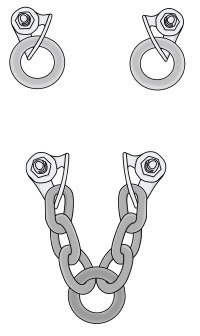
How To Clean a Sport Anchor For Lowering – Method 1
This method is suitable for anchors with a central point which is big enough to feed a bight of rope through. You will remain ‘on belay’ during the whole setup.
You will need:
* Two spare quickdraws
* One screwgate carabiner
Step 1
Clip your rope through a quickdraw on one of the anchor bolts.
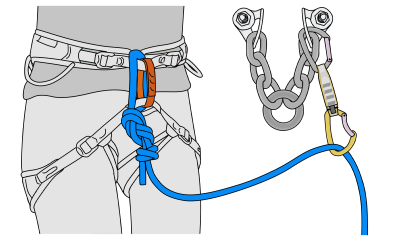
Step 2
Clip another quickdraw into the other anchor bolt and clip it directly to your belay loop. Rest your weight on this quickdraw.
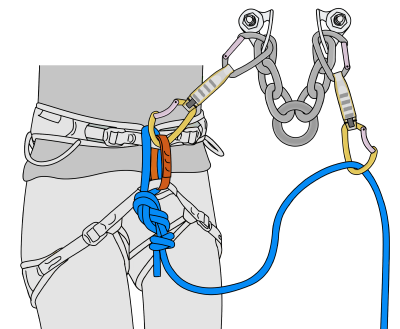
Step 3
Pull up a little slack and push a bight of the rope through the main anchor point as shown.
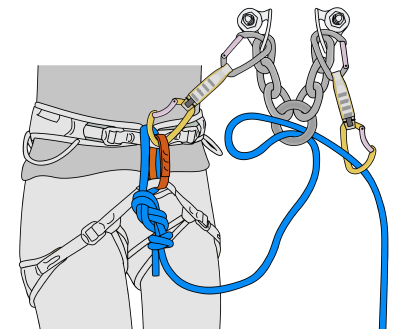
Step 4
Tie a figure-8 on the bight and clip this to your belay loop with a screwgate carabiner.
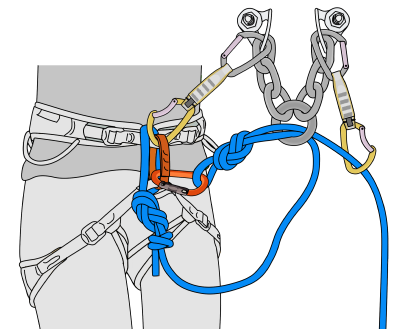
Step 5
Untie from the end of the rope.
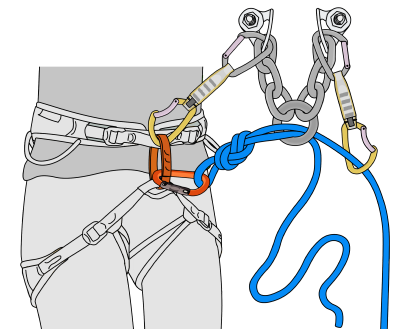
Step 6
Pull the end of the rope through the main anchor point.
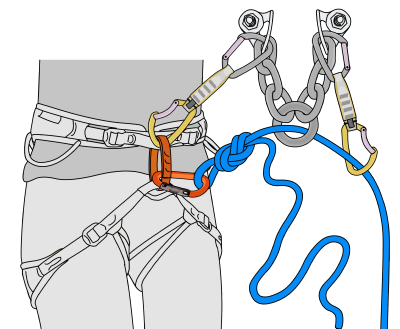
Step 7
Remove the quickdraw which isn’t holding your weight. Ask your belayer to take you tight.
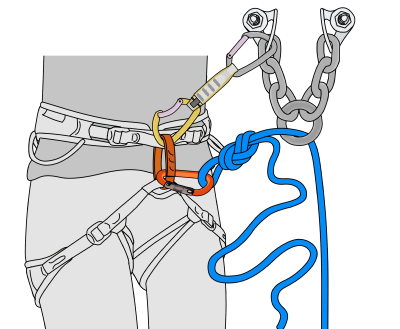
Step 8
Rest your weight on the rope, then remove the other quickdraw. You are now ready to lower.
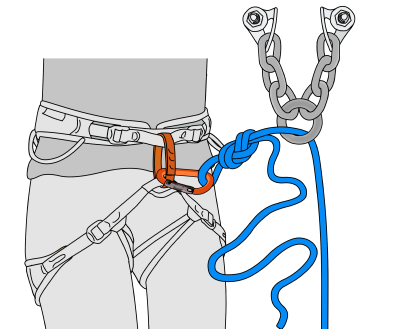
How To Clean a Sport Anchor For Lowering – Method 2
Sometimes, you won’t be able to push a bight of rope through the anchor. This depends on the thickness of your rope and the type of anchor. In this case, you must use a slightly different method. As with method 1, you will remain ‘on belay’ during the whole setup.
You will need:
* Two spare quickdraws
* One screwgate carabiner
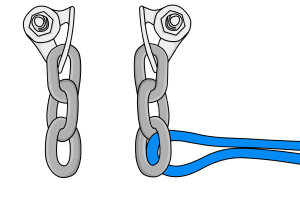
Step 1
Clip two quickdraws into the anchor bolts; one clipped through the rope and the other clipped directly into your belay loop, just the same as method 1.
Rest your weight on the quickdraw.
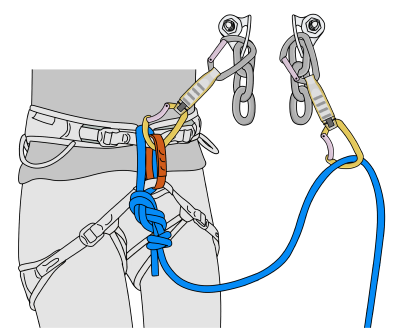
Step 2
Pull up some slack rope and tie a figure-8 on a bight. Clip this to your belay loop with a screwgate carabiner.
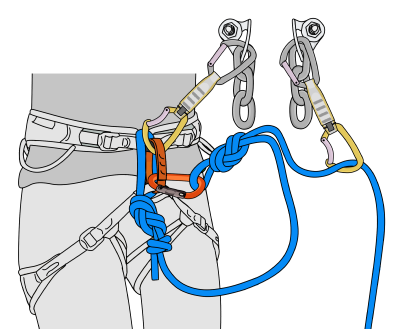
Step 3
Untie from the end of the rope.
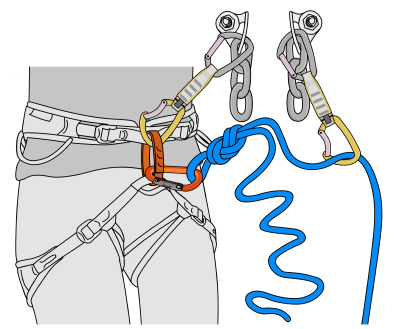
Step 4
Feed the end of the rope through the main anchor point(s).
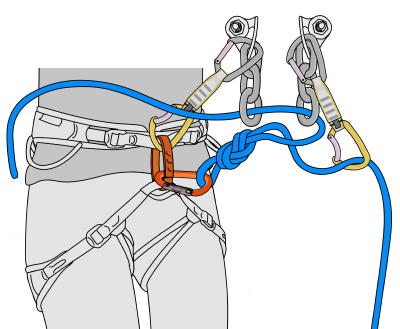
Step 5
Tie in to the end of the rope.
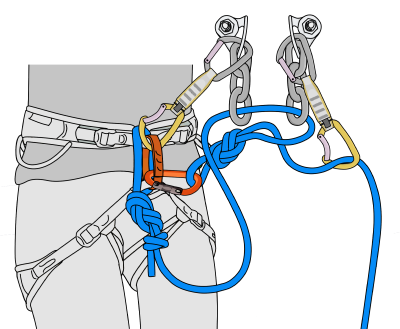
Step 6
Remove the screwgate carabiner and untie the figure-8 on a bight.
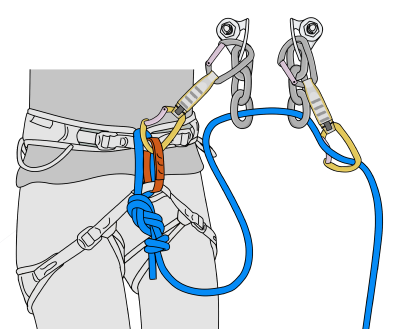
Step 7
Remove the quickdraw which isn’t holding your weight. Ask your belayer to take you tight.
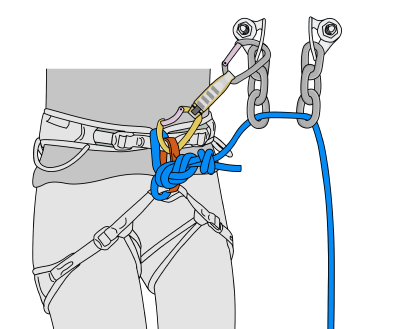
Step 8
Rest your weight on the rope, then remove the other quickdraw. You are now ready to lower.
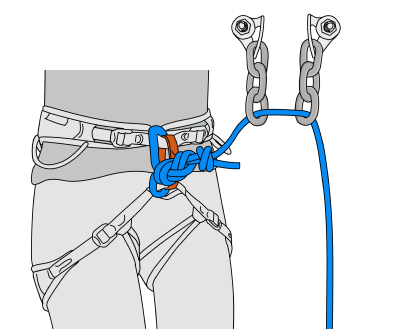
How To Clean a Sport Anchor For Abseiling (Rappelling)
In most cases that you clean a sport anchor, you will lower down - this is much quicker than abseiling. It’s also much easier to retrieve gear on your way down when lowering. However, abseiling puts much less wear on the rings. This could be the best option if the rings are already showing signs of wear.
You will need:
* A belay device with a screwgate carabiner
* A prusik cord with a screwgate carabiner
* Three spare carabiners (two of these must be screwgates)
* Two 60cm slings
Step 1
Girth-hitch both slings through your belay loop and attach them to the anchor bolts with screwgate carabiners.
You can now tell your belayer that you are ‘off belay’.
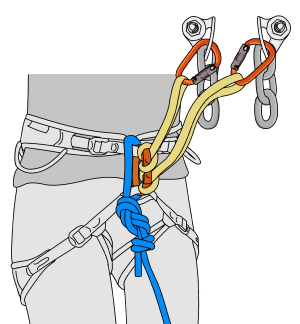
Step 2
Pull up some slack and tie the rope to a carabiner. Clip this to your belay loop. You don’t necessarily need to use a screwgate carabiner here, and it doesn’t matter too much what knot you use. The point of this is so you can’t accidentally drop the rope during the following steps.
Some climbers clip this to a gear loop, since it will not be weighted. This is okay, but it’s possible to break your gear loop if the rope gets stuck on something, meaning that you would end up ‘stranded’ at the top of the climb without a rope.
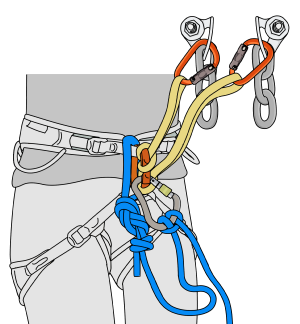
Step 3
Untie from the end of the rope.
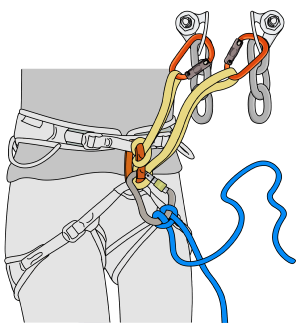
Step 4
Feed the end of the rope through the main anchor points.
Tying a knot in the end of the rope stops it from zipping through the anchor if you accidentally let go of it during the next step.
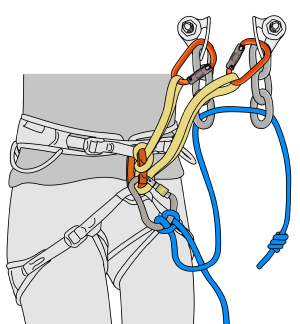
Step 5
Remove the carabiner from your belay loop and untie the knot. Pull the rope down so that both ends are on the ground. Some ropes have a convenient middle marker to make this easier.
Ask your belayer to confirm that the ends are down. If the ends are only just down, or if you’re abseiling to an exposed ledge, you should tie knots in both ends of the rope. These knots stop you from accidentally abseiling off the end of the rope.
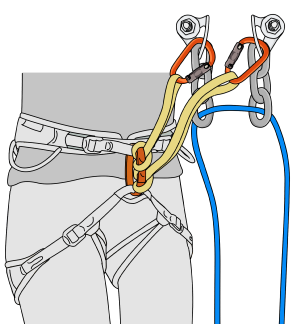
Step 6
Attach your belay device and prusik to the rope.
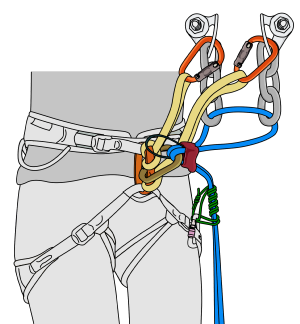
Step 7
Weight your belay device to check the setup. Then remove the slings. You are now ready to abseil.
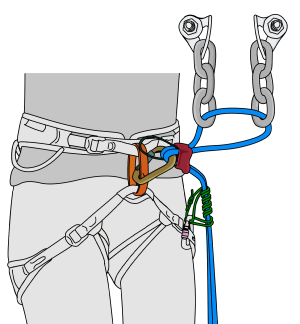
Cleaning Sport Anchors – Top Tips
* Always double-check the setup before you untie each knot. A mistake could be fatal.
* Make sure to communicate with your partner so they know if you plan to lower or abseil. If you plan to lower but your partner thinks you will abseil, they will take you off belay! Be clear about what you are doing.
* Look out for sharp edges beneath the anchor. Consider abseiling, rather than lowering, if your rope could run over a sharp edge.
* It’s important that you don’t add wear on the anchor rings by top-roping off them. Make sure to use your own screwgates and slings for top-roping so any wear is on your own gear rather than the rings.
* Always inspect the quality of the anchors and the rock around them before trusting your life to them.
* Never thread a rope directly through a bolt hanger. The square edges are likely to damage or cut your rope. Only thread your rope through round-edged metal.
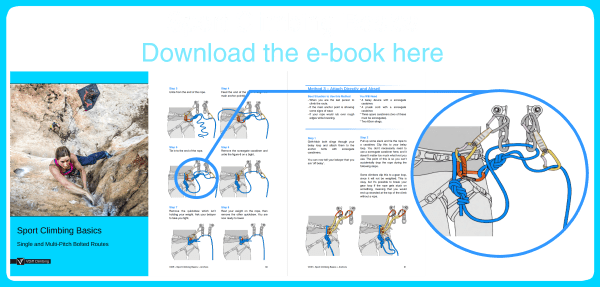





5 thoughts on “Sport Anchors – Part 3 of 4 – Cleaning the Anchor”
Comments are closed.